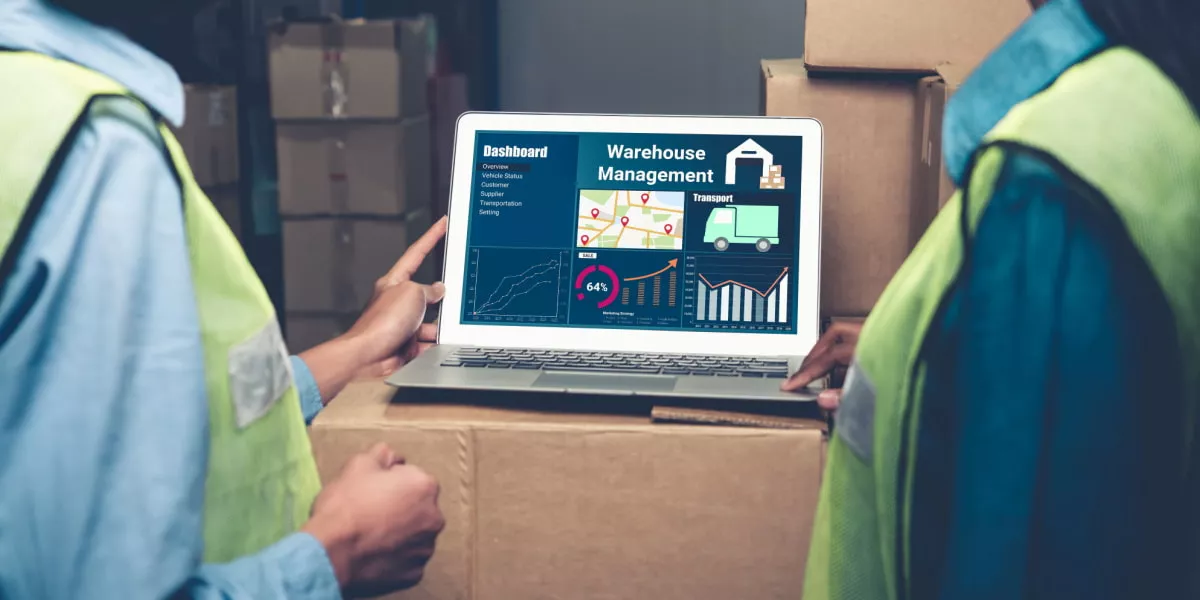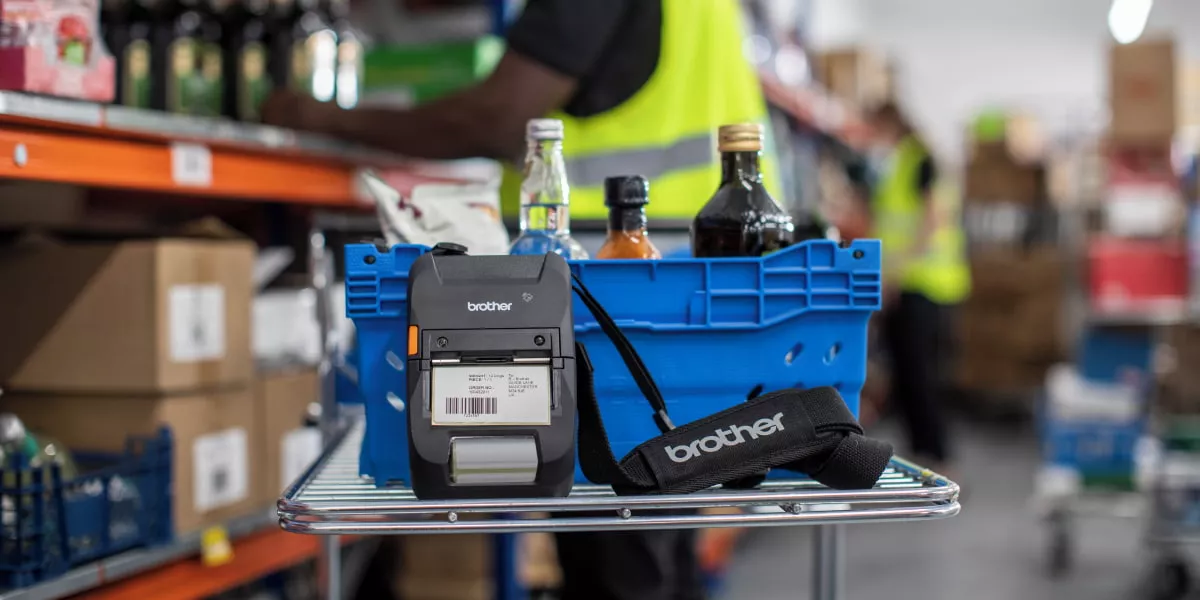The importance of supply chain management (SCM)

Throughout the history of commerce, supply chains have been a vital component of businesses. However, as the world has evolved, supply chains have grown to span across countries and continents, becoming increasingly intricate.
It goes without saying that supply chains are critical to keeping any business afloat, regardless of size. But for small businesses in particular, a poorly managed supply chain can lead to a lack or excess of stock, or inability to access the tools needed to provide a service. All of these outcomes can be disastrous.
Let's take a closer look at what supply chain management (SCM) is and why it is so important for business, as well as some important information on how organisations can utilise technology to better equip themselves for future success.
What is supply chain management?
Put simply, a supply chain is the network that facilitates the flow of goods from raw materials to the final product and end consumer. That can include procurement and preparation of raw materials, manufacturing, distribution and shipping, before we even get anywhere near a final sale.
Some supply chains can be simple: A farmer supplies eggs to a local bakery, which bakes cakes on site and sells them to hungry customers.
Others can be incredibly complex. That same bakery might also serve coffee, for example.
The coffee fruit will likely have been grown overseas; passed on to a processor for fermenting, drying and milling; dried and packed for transport; shipped to Australia; delivered to a roastery to be roasted and packed in branded packaging; then sold on to the bakery, where it's ground and turned into a delicious espresso.
In the case of highly manufactured tech products like smartphones, the supply chain can quickly become a web of international suppliers and manufacturers, as well as network providers and data storage suppliers, too.
In the fashion industry, supply chains have been the focus of criticism around poor working conditions and damaging environmental impact. That has led many small fashion retailers to focus on transparency, ethics and fair pay across their supply chains.
During the global pandemic, Australian fashion brand She Lion went as far as creating a line of sweatshirts with a 100%-Australian supply chain, from the mill turning cotton into fabric, to the factory that dyes the cloth, to the pattern designers, printers, manufacturers and distributors. All in, the project supported some 22 local businesses.
What are the 5 stages of supply chain management?
Managing supply chains will look a little different depending on the size of a business and the sector it operates in. But it simply means ensuring those supply networks are as efficient as possible, and running smoothly. The five stages of supply chain management typically include:
- Planning: Assessing demand and choosing the right vendors and partners to work with, as well as managing inventory and orders
- Sourcing: Finding partners to reliably provide the best-quality materials or goods, including robust vetting processes
- Manufacturing: Creating products or parts to sell on - this can include assembling, quality control and packaging
- Logistics and delivery: Getting goods where they need to be, or delivering on a service - including long-haul and last-mile transport
- Returns: Also called 'reverse logistics', returns processes can be key to customer relationships
Why is supply chain management important?
Perhaps most importantly for small businesses, effective supply chain management means saving time and money - top priorities for most small and medium-sized enterprises (SMEs).
But equally, sourcing new stock quickly - or even being able to procure custom orders - improves customer experience. Being out-of-stock for too long can stall momentum and hamper growth, while having too much stock is costly, too.
For businesses that are themselves part of a wider supply chain, good management can help them meet their obligations on time and within budget.
Considering the current economic climate, here are five key benefits of effective supply chain management:
1. Improving the bottom line
Businesses that manage supply chains effectively are likely to be more cost-effective, overall. Reducing the number of steps in your supply chain, and ensuring you're working with the most cost-effective suppliers can reduce your operating expenses.
At the same time, having the stock you need when you need it - or the tools and resources you need to offer your services - can only boost revenue.
2. Saving time
A well-managed supply chain will be reliable, meaning business owners won't be waiting months for stock to come in, or wasting precious time chasing up suppliers.
3. Predictability
Similarly, good supply chain management can remove any guesswork, offering more visibility into the stock you'll have available and when. Simply having this information to relay to your own customers can improve their experience, showcasing your business as a trusted vendor or partner.
4. Sustainability and ethics
Increasingly, consumers and businesses alike are placing more importance on the social and environmental impact of their spending, and are more likely to partner with or purchase from 'responsible' businesses.
Well-managed and tech-enabled supply chains allow for full transparency, meaning businesses can better understand their impact, and share that information with customers.
5. Resilience and risk management
This transparency also means businesses have a clearer view of any risks on the horizon. They can then prepare for any event that might affect their supply chain - extreme weather or political instability, for example.
Best practices in effective supply chain management
For many large businesses, supply chain management is a strategic priority. After all, when high volumes of stock are involved, there are large cost-savings to be had.
But the benefits for small businesses can be significant, too. And getting best practices down from day one can only lead to more efficient operations today, and a smoother growth trajectory.
Here are some best practices in supply chain management to consider:
Lean and agile supply chain strategies
In supply chain management, an agile strategy means being responsive and flexible - that is, having a robust plan in place, while proactively preparing for anything that might go awry. Agile businesses will be ready for a course correction at a moment's notice, and less likely to be left without stock.
An agile strategy also allows businesses to optimise inventory management, avoiding over-stocking (and overspending) while reducing risk.
Integration of tech and automation tools
Today, technology is integral to almost every aspect of small business, and there are many ways in which it can help in supply chain management, too (more on that below).
But it's also important to integrate supply chain management technology with the tech in the rest of the business. This will ensure objectives are aligned, databases are up to date, and everyone within the business are on the same page.
Building strong networks
Building a strong supply chain means building strong relationships with genuinely trusted partners, and creating a culture of collaboration and partnership.
That not only means vetting partners, it means tackling problems collaboratively and avoiding casting blame.
When considering potential supply chain partners, weigh up the pricing, expertise and timelines. But also think about whether you share values, and whether you can work together towards a common goal.
Sustainability and ethical considerations
Social and environmental impact is increasingly important to consumers, which also means that - as well as wanting to do the right thing - more and more businesses are focusing on it too.
Managed well, an 'ethical' supply chain can have significant reputational benefits. Some businesses might even choose to go through a certification process, ensuring (and proving) that their supply chain management reflects their values.
Continuous improvement
Revisit your supply chain management strategy periodically, assessing what is working well and what could be improved. Consider the metrics that are most meaningful to your business, and track them consistently.
Also, continue to do your research. Look up tips for effective supply chain management in your industry and stay across any emerging trends that could change things for your business, to ensure you continue to operate as efficiently as possible.
Emerging trends in supply chain management
The global supply chain is rapidly evolving and we need to be aware of the surrounding environments and trends in order to replace weak links and improve efficiencies.
Here are some emerging trends in supply chain management to be aware of:
Digital transformation
Supply chains (like everything else) are becoming increasingly digitised and automated. Internet-of-Things capabilities offer real-time tracking and insights, while artificial intelligence can optimise warehouse automation, for example.
In every step of the supply chain, businesses are also moving away from paper record-keeping.
Many of Brother's high-speed scanners and multi-function colour laser printers can upload scanned documents directly to the cloud, allowing for more efficient and accurate record-keeping, and easier ways to share information.
Supply chain transparency
With the increasing focus on sustainability, there are solutions emerging that can offer full transparency and traceability in global supply chains.
Blockchain technology can provide end-to-end visibility of the movement of goods, all the way through to the end consumer. That means businesses can easily assess their networks and their relationships with suppliers (and their suppliers' suppliers; and so forth).
They can also collect tangible data on the impact of their supply chain, allowing them to address any issues or inefficiencies quickly.
eCommerce and omni-channel logistics
The eCommerce sector is booming, and evolving fast, creating more demand for fast and efficient logistics and delivery processes. Most retailers now use an omni-channel strategy, selling through online stores, apps and third parties, as well as in bricks-and-mortar stores.
In eCommerce, supply chain management is intertwined with inventory management.
Brother's range of portable printers and thermal labelling devices can ensure smooth warehouse logistics, while helping businesses digitally keep track of inventory, minimising human error.
Further, Brother's labelling solutions also ensure vendors are compatible with major shipping companies, maximising the chances of quick delivery and happy customers.
Brother offers a wide variety of products supporting efficiency in warehouse logistics, including portable 3-inch label and receipt printers such as the robust RJ-3250WB device, with Bluetooth and wireless connectivity, allowing small labels to be printed anywhere on the warehouse floor.
Other portable printing solutions, such as the PJ-883, allow workers to print high-quality, A4 documents on the go, saving time, maximising efficiency, and reducing miles travelled.
A range of apps, such as the Brother iPrint&Scan tool, along with software development kits (SDKs) can also support traceability in the supply chain. These software solutions allow information to be accessed remotely, and can be integrated with other business platforms.
Circular economy and reverse logistics
The eCommerce evolution also means customers are demanding more: faster delivery, bespoke products and easy returns processes.
We're also seeing the emergence of more subscription services and 'circular economy' businesses, whereby a customer might 'borrow' a fashion item, for example, and return it later.
Businesses offering returns - or baking them into their business models - will also need to consider their label printing needs, as well as the logistics to receive and process returned goods, and offer refunds where applicable.
Finally, when it comes to keeping operations as green as possible, businesses can consider Brother's range of refurbished printers, utilise the Cartridges 4 Planet Ark cartridge recycling program, or use Brother's high-speed scanners and multi-function printers, to transition to paperless operations across the board, including when managing supply chains.
Low carbon supply chains
Finally, part of the sustainability conversation in supply chains is around reducing carbon emissions. This has benefits from a reputational point of view, but can also set businesses up to comply with ESG regulatory requirements in the future.
According to New Zealand-based startup Platform8, the most carbon-efficient supply chains are often the most cost-efficient, too.
For small businesses, reducing energy consumption in supply chains could mean using energy-efficient printing solutions, working with carbon-neutral last-mile shipping providers, or sourcing from local suppliers.
It may even be worth looking at digitising certain document workflows through scanning technology.
The ADS-4700W desktop scanner, for example, allows for paper documents to be securely digitised and uploaded, with software integration and optical character recognition (OCR), meaning contracts and other information can be shared with supply chain partners. This will not only bolster sustainability efforts, but also support communication, and help foster a collaborative and transparent relationship.
The final word on supply chain management for small business
Technology is changing the way businesses manage their supply chains, and hardware products play a significant role.
Small businesses that manage their supply chains as efficiently as possible will reap the benefits in the long run, saving time, maximising revenue, and gaining the edge over the competition.
Of course, getting this right as a small business will also put you in good stead for future growth.
Brother has a range of solutions to help your business on the way to optimal supply chain management. Contact us today to learn more about how we can help.

Resource Library
Be the first to receive exclusive offers and the latest news on our products and services directly in your inbox







.jpg?h=720&iar=0&w=1920&rev=36358aeeea934b07bce65a5d230d3519)

